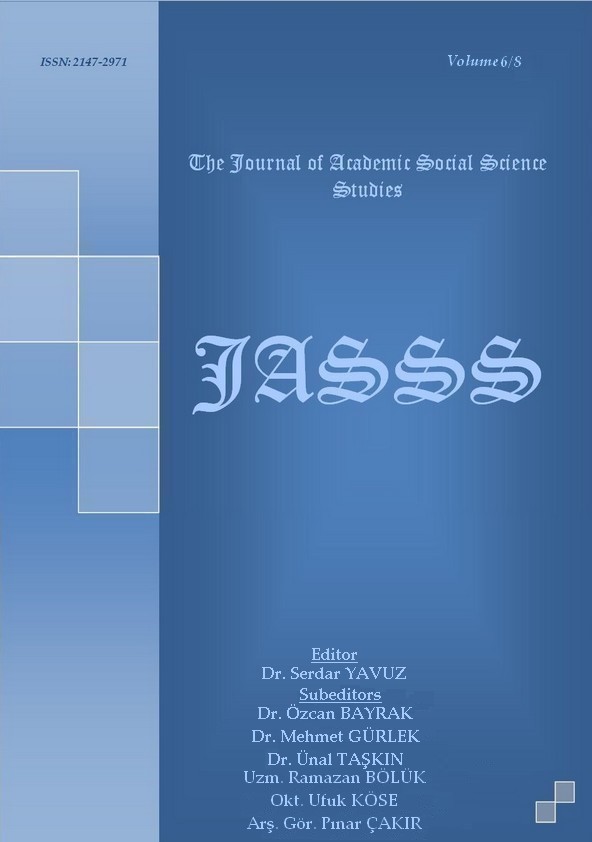İMKB’DE İŞLEM GÖREN TURİZM İŞLETMELERİN VERİ ZARFLAMA ANALİZİ YÖNTEMİYLE MALİ PERFORMANSLARININ ÖLÇÜMÜ VE BENCHMARKING UYGULAMASI
Author :
Abstract
Günümüzde işletmelerinin hayatta kalma şanslarını, rekabetteki başarı düzeyleri belirlemektedir. Bu nedenle işletmeler rekabet avantajı elde etmek için genellikle benzer ürün üreten işletmelerle performanslarını kıyaslarlar. Kıyaslama (benchmarking), işletme performansını arttırmak için kullanılan bir yönetim tekniği olarak kabul edilmekte ve doğru uygulandığında, güçlü bir rekabet aracı haline gelmektedir. Parametrik olmayan performans ölçümü ve bu yönteme dayalı kıyaslama; elde edilen sonuçların etkin birimler örnek edinilerek karşılaştırılmasına imkân vermekte, işletmelerin rakipleri karşısında zayıf ve güçlü yönlerin belirlenmesi sağlanmaktadır. Bu çalışmada; İMKB’de işlem gören Turizm İşletmelerinin görece mali performansları matematiksel programlama tabanlı Veri Zarflama Analizi yöntemiyle ölçülmüştür. Çalışma teorik ve uygulama olarak iki kısımdan oluşmaktadır. İlk bölümde veri zarflama analizi ve kıyaslama teorik olarak anlatıldıktan sonra uygulama aşamasında İMKB’de işlem gören turizm firmalarına ait finansal veriler kullanılarak veri zarflama analizi sonucu etkin olmayan birimler belirlenerek kıyaslama yapılmıştır. Veriler, akademik kullanıcılar için tasarlanmış EMS (Efficiency Measurement System) yazılımında değerlendirilmiştir. Analiz sonucunda elde edilen etkin ve etkin olmayan birimler belirlendikten sonra etkin olmayan birimler benchmarking yapılacak birimler olarak belirlenmiştir. Etkin birimlerden oluşan referans kümeleri de potansiyel kıyaslama odaklarını oluşturmaktadır. Veriler İMKB’de işlem gören turizm işletmelerine ait bilanço ve gelir tablosu kullanılarak elde edilmiştir. VZA yönteminde kullanılan girdi ve çıktı değişkenleri finansal analiz yönteminde kullanılan oranlardan oluşmaktadır Bu çalışmada 3 adet girdi ve 4 adet çıktı değişkeni kullanılmıştır. 9 firmaya ait saptanan girdi ve çıktı değişken başlıklarından hareketle 2010 yılı incelemeye alınmıştır. Analiz sonuçlarına göre etkin olmayan turizm firmaları etkin firmalar ile benchmarking yapılmıştır. Bu uygulamada girdi/çıktı bileşimlerinde yapılacak değişiklikler oransal olarak belirtilmiştir.
Keywords
Abstract
Nowadays, survival chances of establishments are determined by their success levels among the competition. Therefore, establishments compare their performance with establishments producing similar products in order to obtain a competitive advantage. Benchmarking is accepted as a management technique used to increase the performance of an enterprise and it turns into a means for strong competition when implemented properly. Non-parametric performance measurements and comparisons based on this method allow us to compare the obtained results by taking the effective units as an example, and in this manner the strengths and weaknesses of enterprises against their competitors are determined. In this study, relative financial performances of Tourism Establishments traded in the Istanbul Stock Exchange (ISE) were measured through mathematical programming based Data Envelopment Analysis. The study consisted of two parts, with one being theoretical and the other practical. In the first part, data envelopment analysis and benchmarking were explained theoretically. In the practical phase, financial data of the tourism establishments traded in the ISE was used, the inactive units were determined through data envelopment analysis and benchmarking was performed. Through benchmarking, changes to be made in the inactive units were specified in ratios and information was provided regarding the levels of these changes. Data was evaluated through the EMS (Efficiency Measurement System) software intended for academic use. After the efficient and inefficient units were determined at the end of the analysis, inefficient units were set aside to be included in benchmarking. Data was obtained using the balance sheets and financial statements of tourism establishments traded in the ISE. Input and output variables used in the DEA method consist of ratios used in the financial analysis method. In this study, 3 input and 4 output variables were used 9 tourism companies. In terms of these input and outputs titles, data from 2010 was examined. In line with the results of the analysis, inactive tourism establishments were benchmarked with active firms. In this application, the changes to be made in the input/output combinations were specified in ratios.





